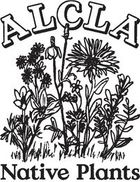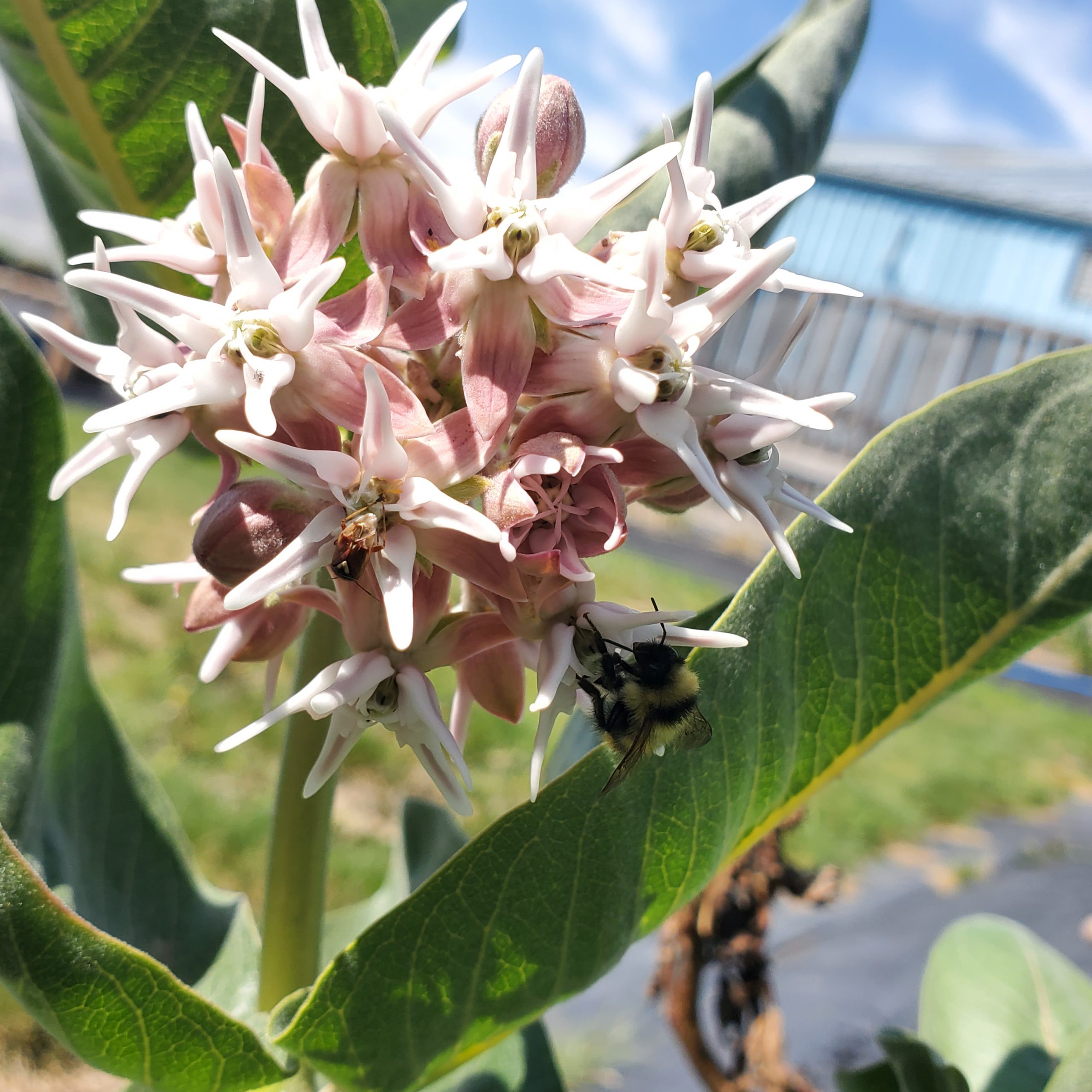Benefits of Native Plants:
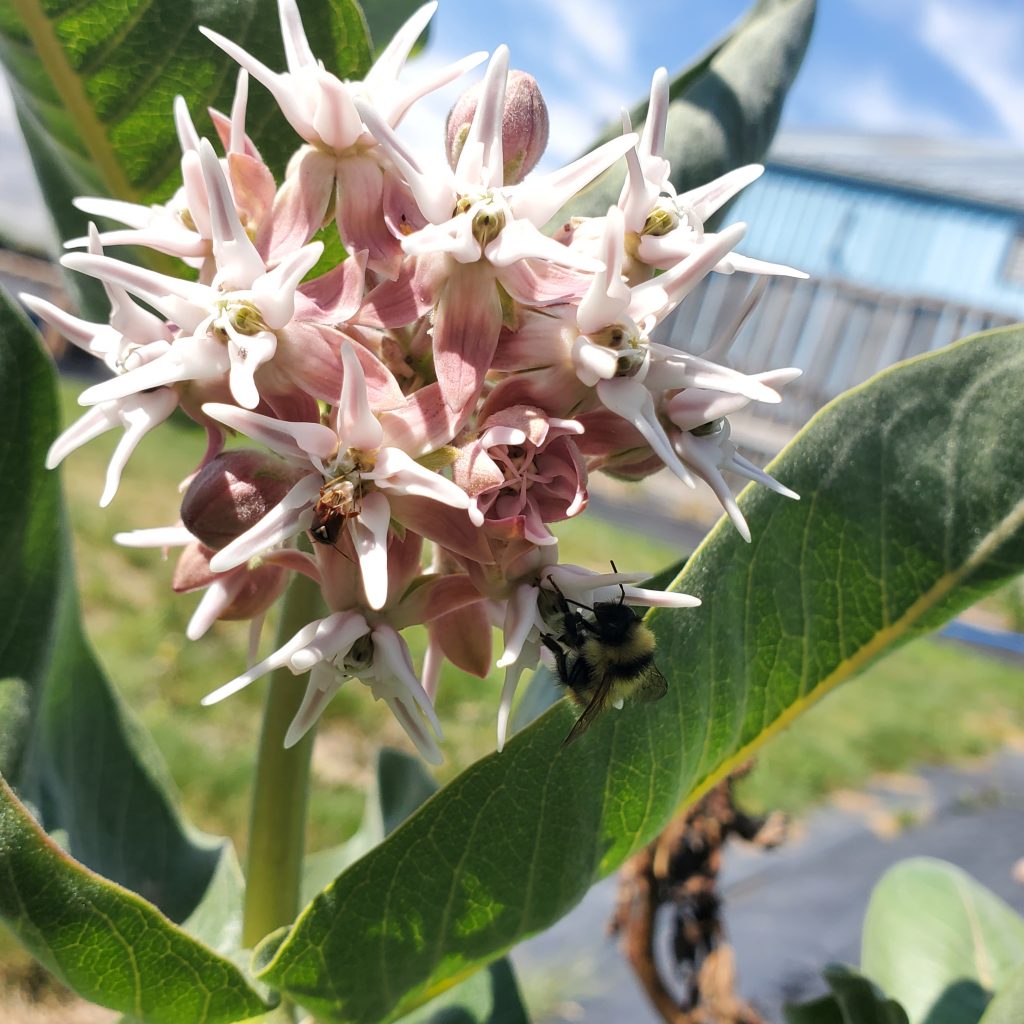
Promote pollinators including native bees, butterflies, moths, wasps, and other insects
Did you know Alberta is home to approximately 375 species of bees, 300 species of butterflies and over 2000 species of moths. Approximately 90% of all known insects have specific relationships with native plants e.g. Monarch butterfly caterpillars can only feed on Milkweeds.
Provide food and habitat for birds
Caterpillars from butterflies, moths, and sawflies provide the highest caloric intake for most birds e.g. 6000 to 9000 caterpillars are required to raise a single brood of Chickadees.
Improve diversity of soil microbes
An estimated 85% of all plants associate with mycorrhizal fungi, which help to improve nutrient intake and overall plant health. Native mycorrhizal fungi associate best with native plants and are essential for promoting healthy soil ecology including diverse bacteria and invertebrates.
Reduce water consumption
The right plant in the right place will not need to be watered once established, even in drought conditions. Note that for most perennials it takes 2 to 3 years for roots to reach mature size and depth.
Reduce soil amendments and fertilizers
Native plants are adapted to native soils and do not require changes in organic matter, pH or drainage to thrive. Legumes are plants that naturally fertilize the soil through a process called nitrogen-fixation.
Adapted to local climate
Native prairie plants have leaves that resist hail damage and protect from sun damage. Native plant root systems can tolerate extreme winter colds and are adapted to survive through Chinooks.
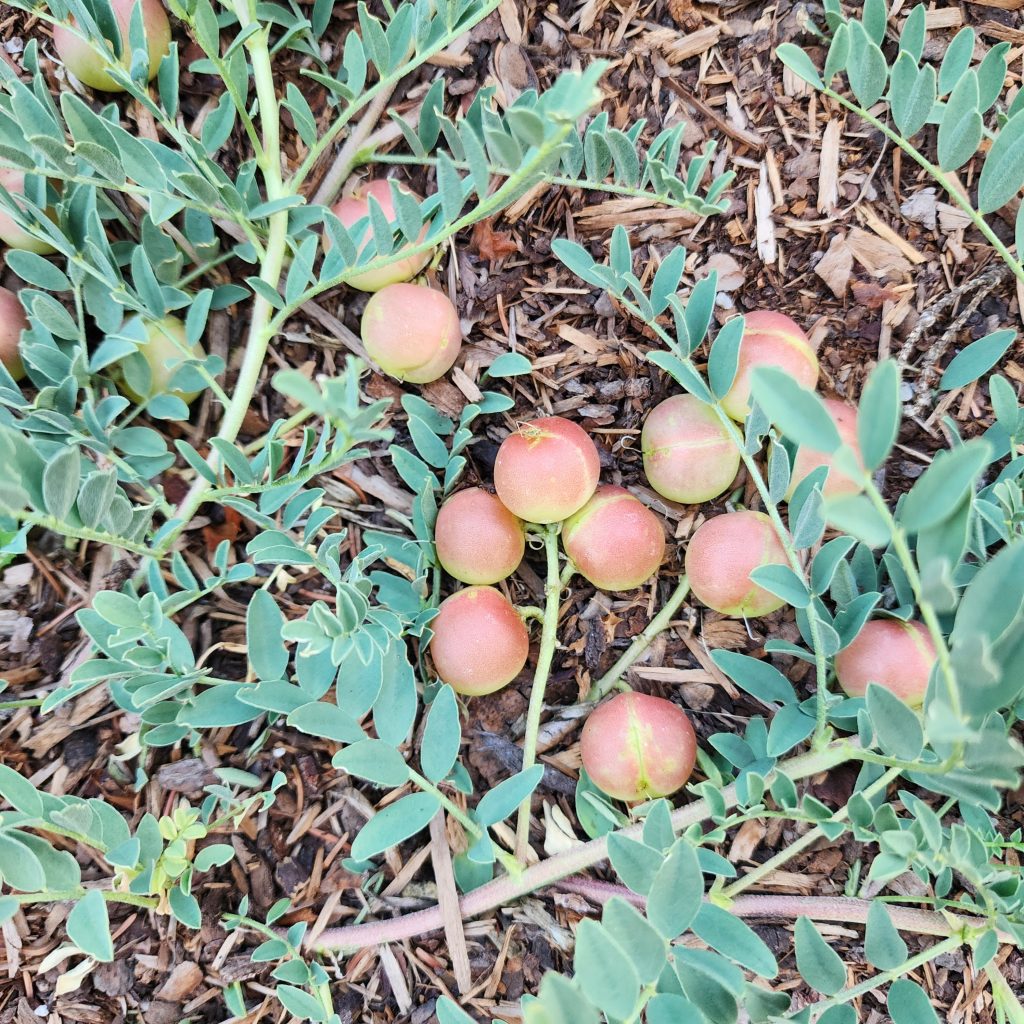
Provide perennial sources of food
Native plants have been eaten by Indigenous peoples since time immemorial. Perennial food crops provide low maintenance and reliable sources of food e.g. Saskatoon, Raspberry, Wild Strawberry, Common Tall Sunflower, Fireweed, Beebalm, Wild Mint, Giant Hyssop, Ground Plum, and Slender Nettle (use gloves when harvesting).
They are beautiful
Native plants grown in a garden can grow 2 to 5 times larger than their wild counterparts, creating incredible show and beauty in any garden. They also have longer bloom periods than many exotic ornamentals, starting in April and ending in October for some species.
Considerations when Making a Native Plant Garden:
Ecology of your garden
Consider the historical ecology of your garden site, was it a prairie or forest? Has the ecology changed due the presence of human-made structures such as buildings and roads? Selecting plants that historically lived on the landscape can improve the longevity of plantings and will support local wildlife. Significant land use changes will also impact which species will thrive. Heavily disturbed sites are best planted with disturbance tolerant species adapted to poor soil and competitive against aggressive weeds e.g. Fireweed, Boreal Yarrow, White Pussytoes, Prairie Sage, Goldenrods, Northern Bedstraw and Green Needle Grass.
Slope
Choose plants that spread by rhizome to stabilize the slope and reduce soil erosion (e.g. Western Wheatgrass, Boreal Yarrow and Northern Bedstraw). Strategize plant locations based on how water runs over a slope.
Light availability
Select plants suitable for the amount of available light. Full sun plants prefer at least 6 hours of sunlight per day. Part shade plants require several hours of shade during the day to prevent wilting and other signs of drought stress. Use our plant database to help with plant selection.
Water availability
Select plants suitable for the amount of water naturally available. Drought-tolerant plants thrive in dry sites and can usually tolerate full sun conditions. Plants that need moisture are best planted near sources of water, in partial shade, or at the bottom of a slope or water catchment area. Avoid planting under overhanging roofs or other obstacles that block rainfall.
Choose flowers with different shapes, colours and sizes
Different species of insects have specific preferences for flower types e.g. short-tongued bees cannot feed on mints, columbines or legumes, and nocturnal moths require night-blooming plants.
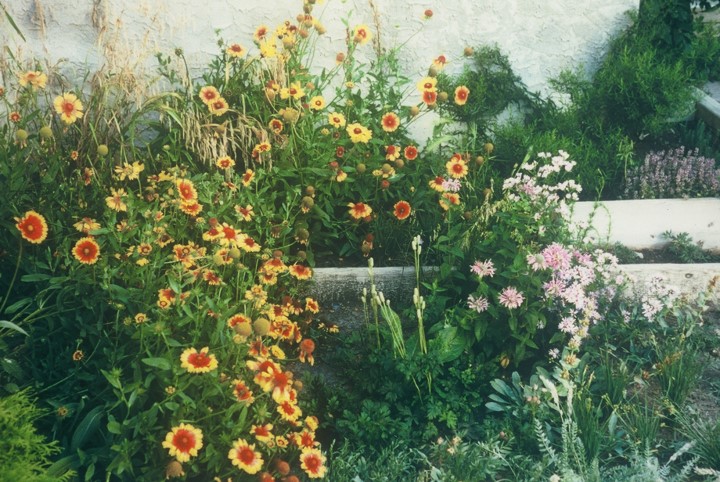
Choose flowers that bloom throughout the season
Different native insects are active at different times of the year. The longer the bloom period in your garden is, the greater the number of species you will be able to attract and support.
Choose between 10-20 different species
Research shows that as few as 10 well-selected plant species significantly increases pollinator biodiversity in your garden and that each new plant species added can significantly increases pollinator biodiversity.
Avoid garden cleanup until May long weekend – or avoid completely!
Leaving areas undisturbed supports insects that overwinter in leaf litter like Ladybugs and adult butterflies, and insects that overwinter in hollow stems such as Mason bees. Keep in mind some insect species do not emerge until July.
